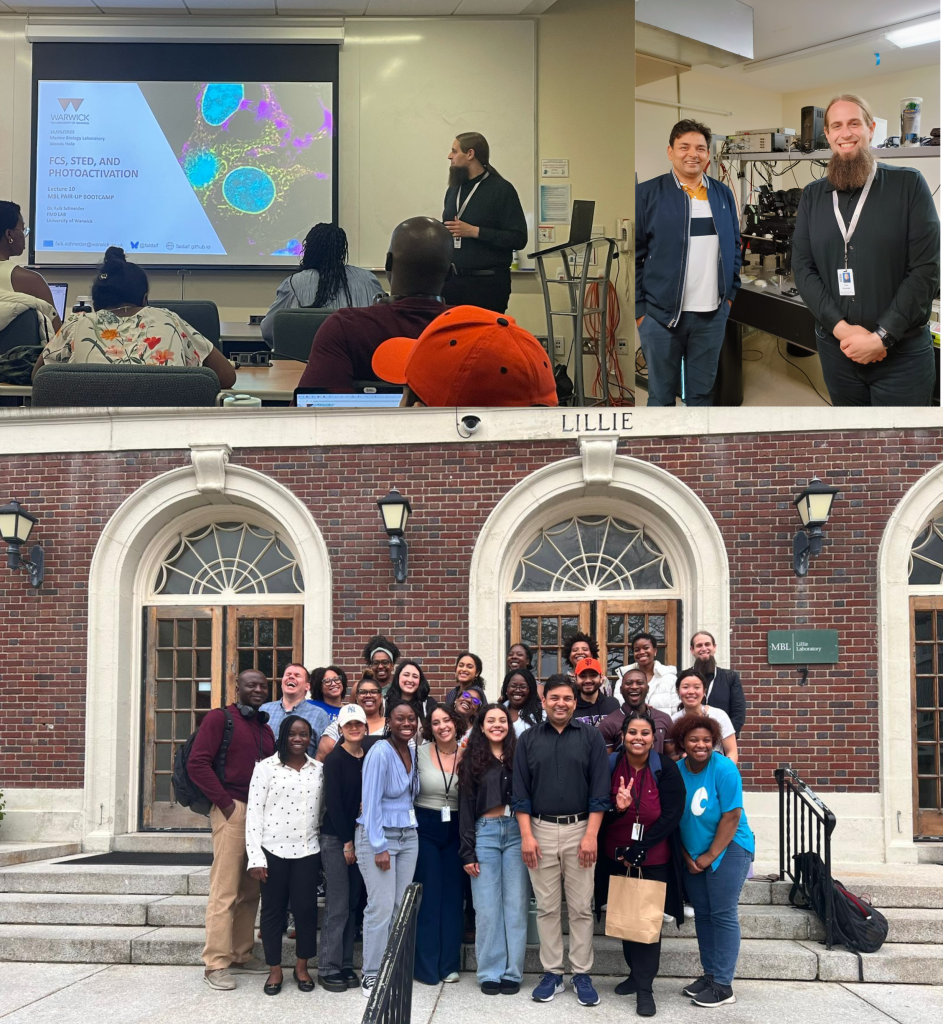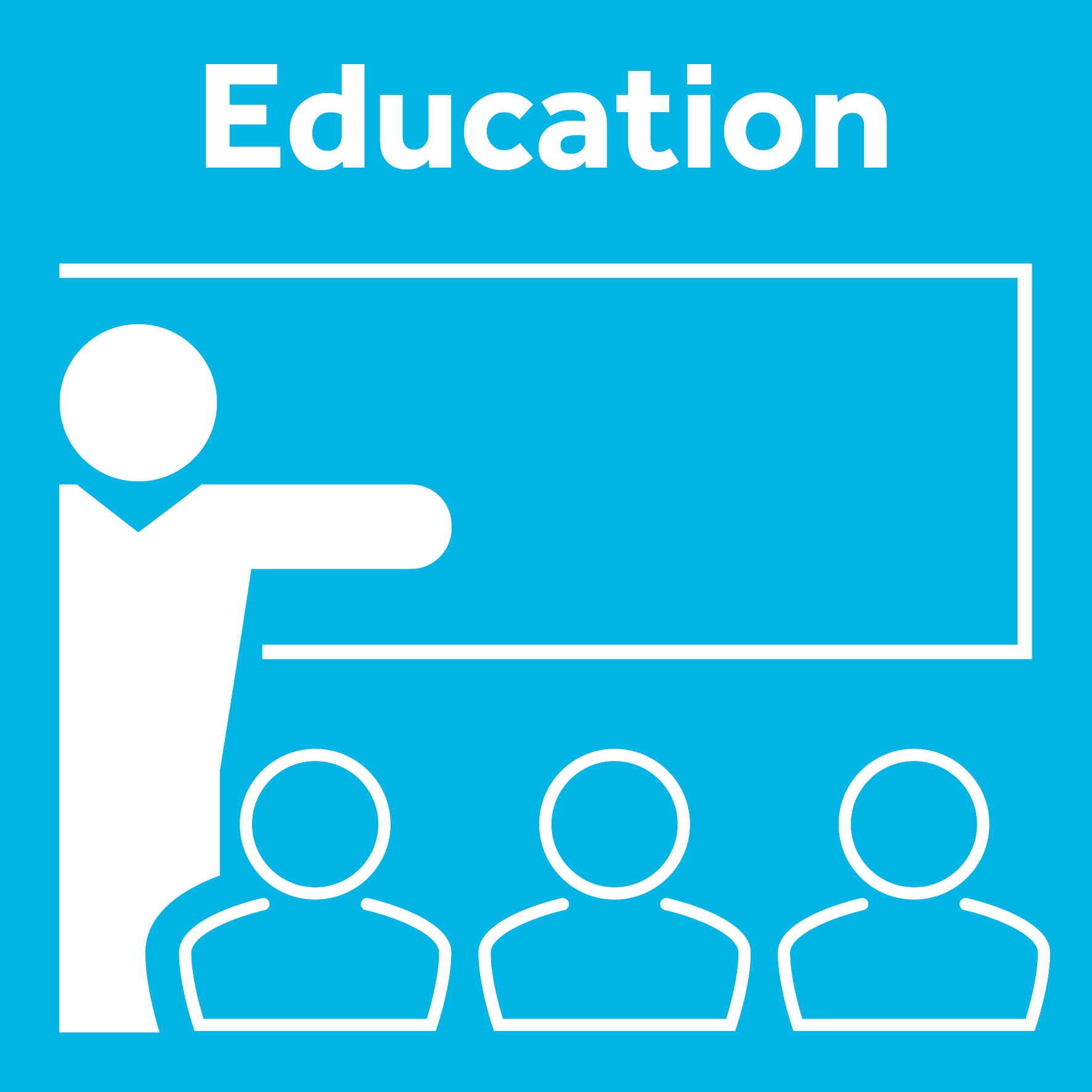There and Back Again – An MBL Story
Posted by Falk Schneider, on 14 September 2025
In May 2025, I had the pleasure of returning to the Marine Biological Laboratory (MBL) in Woods Hole, Massachusetts, to teach in the PAIR-UP Microscopy course. It was a truly special experience as I not only got to meet and mentor many bright and curious young scientists, but it also marked a return to a magical place that had played a transformative role in my own scientific path.
My adventure at MBL as a course participant
Back in 2017/2018, during my PhD at the University of Oxford, I was looking to broaden my scientific horizon. I came across MBL’s advanced training courses and was immediately captivated. The offerings were wide-ranging from quantitative imaging to developmental biology and neuroscience. The one that caught my eye immediately was the Physical Biology of the Cell (PBoC) course run by Prof Rob Philips and Prof. Hernan Garcia. I had always been interested in using models to better understand biology and using math to put numbers on microscopy images. This course seemed like the perfect opportunity to provide a quantitative foundation.
Thanks to a travel grant from my home institution (the Weatherall Institute of Molecular Medicine, Oxford) and a travel bursary from MBL, I was able to make the trip across the Atlantic. Arriving at MBL felt like stepping into Rivendell. Once you cross the stream, you’re in a place that feels removed from the noise of everyday hassles and administration. The focus is on science – stimulating, buzzing, and open to creativity. The generous meals, especially the breakfast and coffee, in the Swope cafeteria looking out across the eel pond provided the foundation for many days of learning and exploring.
The PBoC course itself was well-structured, intense, and inspiring. We had lectures from world-renowned scientists, hands-on coding and math bootcamps, and mini research projects. A typical day started with a swim at 6 am, followed by breakfast, lectures at 9, and then lab and discussion sessions well into the evening. I particularly enjoyed the one-on-one time with the faculty in the so-called “sweat-box” sessions where the course organizers and other faculty would leave and the students were encouraged to ask any questions. The mini rotation projects gave us the opportunity to dive deep into a new topic. I still vividly remember wrestling with questions about the information content of gene expression patterns in a project with Hernan Garcia and exploring transport and diffusion in the endoplasmic reticulum in another project with Elena Koslover. While we were technically working on our own projects, there was a great sense of community and support from the students, tutors, and faculty. We learned together, challenged each other, and often kept going late into the night, powered by curiosity and the occasional “beer and dance” hour. When I left MBL, I took with me more than just new skills and techniques, I left with a new perspective. The course gave me the confidence to change field from immunology during my PhD studies to developmental biology for my postdoc.

Returning to MBL as faculty
Fast forward to 2025: I had just started my laboratory for fluorescence and membrane dynamics (FMD) as Assistant Professor at the University of Warwick. Through a bioimaging-focused collaboration with Abhishek Kumar, I was invited to return to MBL and this time as a teacher in the PAIR-UP microscopy course.
PAIR-UP stands for Partnering to Advance Imaging Research for Underrepresented scientists Program launched in 2020 and led by Dr. George Langford. PAIR-UP vision stands on three key pillars: education, research, and community. It brings together students and researchers from underrepresented communities and provides advanced training in imaging, access to cutting-edge equipment, and a support network of mentors and peers. It impressed me how well the course was structured and that it not only provided support scientifically, but socially and emotionally. PAIR-UP addresses more than just technical gaps. It tackles the challenges of cultural isolation in science by building a community and creating space for everyone to thrive.
I was honored to be invited to lecture on STED microscopy and fluorescence correlation spectroscopy, as well as to run a (Phasor-)FLIM demonstration using MBL’s Leica Stellaris 8 system. The students asked sharp, thoughtful questions and brought great energy to the sessions. It was incredibly rewarding to engage in deep discussions and see the same spirit of curiosity I had experienced many years before. The hands-on aspect of a course like that seems incredibly important to me. It allows the students to relate topics discussed in class to the real world. Also walking into a lab and seeing researchers performing experiments using some “exotic imaging technique” as part of their daily research is quite instructive.
PAIR-UP matters
I believe initiatives like PAIR-UP and MBL courses are vital. They provide opportunity and a steppingstone for researchers that lack support and community. They create space for meaningful, personal interactions, something that’s increasingly rare in formal education. Often, all it takes is someone taking the time to sit down with you and patiently walk you through a concept, one-on-one. This kind of focused, respectful mentorship, paired with rigorous classroom and hands-on training, gives students the tools and confidence they need to grow and succeed. And doing all this at MBL, away from the distractions and hierarchies of everyday academic life, makes a big difference in my opinion. This creates a sense of shared purpose, curiosity, and community.
For me, coming back to MBL as a faculty was a way of giving back to a place and a model of learning that helped shape my path. I hope to visit again and continue supporting the next generation of scientists as they find their voice, their tools, and their place in the scientific community.

Top left: Falk’s lecture
Top right: Abhishek Kumar shows his high-end imaging setups in his lab at MBL
Bottom: PAIR-UP microscopy course group picture


 (No Ratings Yet)
(No Ratings Yet)
A very inspiring story. I am so pleased I had a chance to meet Falk and attend his lecture. He made a big impression on all of us and we look forward to having him back again.